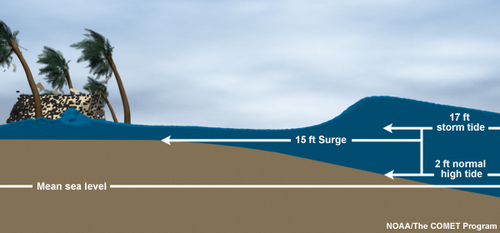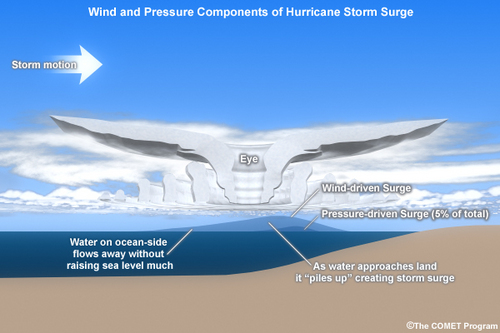- Storm surge is historically the leading cause of hurricane-related deaths in the United States.
- Water weighs about 1,700 pounds per cubic yard, so battering waves from surge can easily demolish buildings and cause massive destruction along the coast.
- Storm surge undermines roads and foundations when it erodes material out from underneath them.
- Just one inch of water can cause $25,000 of damage to your home. Homeowners and renter’s insurance typically do not cover flood damage.
Storm surge is an abnormal rise of water generated by a storm, over and above the predicted astronomical tides. Storm surge should not be confused with storm tide, which is defined as the water level rise due to the combination of storm surge and the astronomical tide. This rise in water level can cause extreme flooding in coastal areas particularly when storm surge coincides with normal high tide, resulting in storm tides reaching up to 20 feet or more in some cases.


Storm Surge vs. Storm Tide
Factors Impacting Surge
Storm surge is produced by water being pushed toward the shore by the force of the winds moving cyclonically around the storm. The impact on surge of the low pressure associated with intense storms is minimal in comparison to the water being forced toward the shore by the wind.


Wind and Pressure Components of Hurricane Storm Surge
Other factors which can impact storm surge are the width and slope of the continental shelf. A shallow slope will potentially produce a greater storm surge than a steep shelf. For example, a Category 4 storm hitting the Louisiana coastline, which has a very wide and shallow continental shelf, may produce a 20-foot storm surge, while the same hurricane in a place like Miami Beach, Florida, where the continental shelf drops off very quickly, might see an 8 or 9-foot surge.
No comments:
Post a Comment